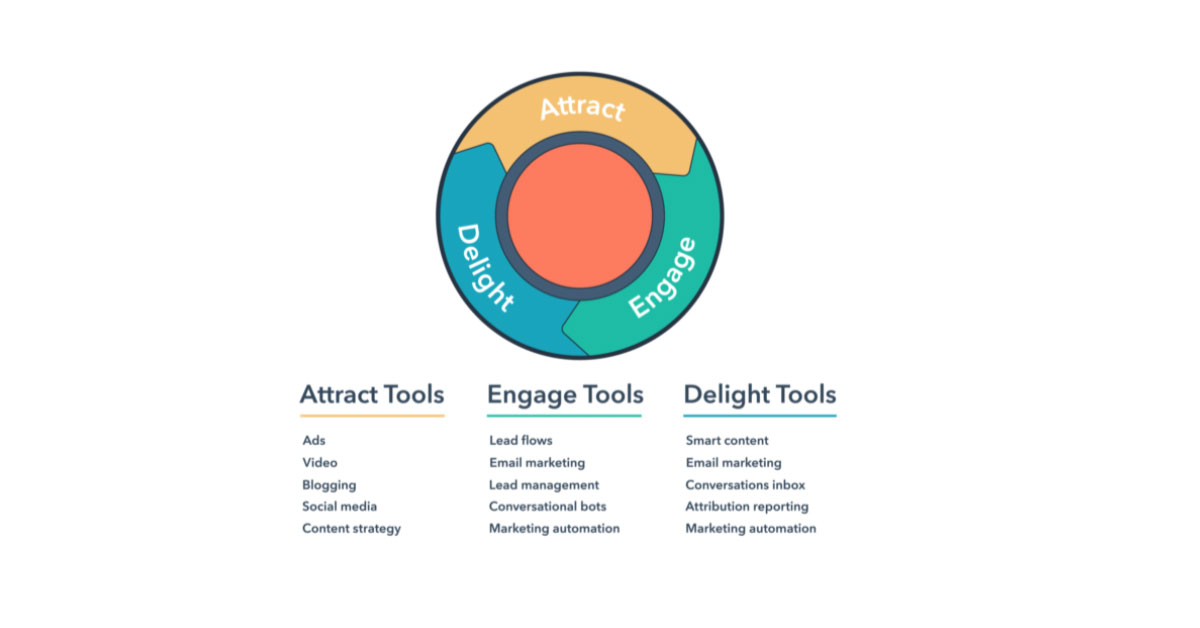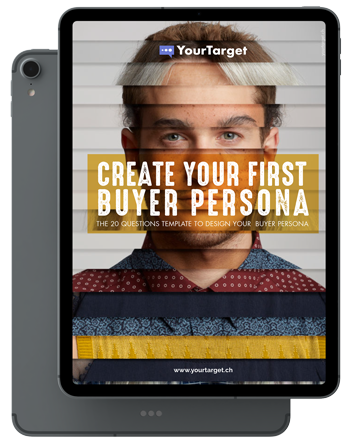Have you ever heard about Inbound Marketing Methodology? Did someone suggest you to put online a blog but you don’t understand why and, above all, how a blog is supposed to help your business? Well, that’s the post you were looking for!
Today, you will learn about:
- The end of traditional interruptive marketing;
- What Inbound Marketing is;
- Why inbound works better than outbound marketing;
- How a great piece of content is useful to your business;
How does that sound? Let’s start!
Got tired of commercials? Your customers too!
Newspapers, magazines, tvs, radios, websites and even social media are full of commercials.
People and businesses too keep on trying to sell items or services to other people. You’re watching your favourite tv series and a toothpaste just pop up on the screen. “Whiten your tooth right now. Use it!”
You’re trying to relax after a stressful day and boom, you become a victim. A marketing victim.
Yes, that’s the outbound marketing formula. That’s how traditional marketing works! It’s simply interruptive; it interrupts your life, it just shows around and… it no longer works!
Over time, since 1830 when penny press revolutionized the mass media world introducing commercial banner into newspapers, we got used to commercial and it happened that now we just don’t pay attention to it.
Toothpaste on tv, shining clocks on your Facebook newsfeed, bright banners on blogs. You simply don’t see them, you move on. And, as you, your customers do it too.

What’s Inbound Marketing and how inbound methodology works?
By reading what I wrote so far, you will ask yourself: so then? How do I sell my stuff?
Good news! I didn’t say marketing is no longer working. I just said you have to change your way to do marketing. How? Don’t interrupt people’s life. Just go towards them!
That’s basically Inbound Marketing philosophy. Providing useful information to your potential customers will drive them, step by step, to buy on your website or request your help.
How can Inbound Marketing be defined?
I will use HubSpot definition which is the most accurate you can find to explain this innovative, powerful and working marketing methodology.
“Inbound marketing is focused on attracting customers through relevant and helpful content and adding value at every stage in your customer’s buying journey. With inbound marketing, potential customers find you through channels like blogs, search engines, and social media.”
How Inbound Marketing works?
As I said, you are used to commercial and you may be thinking this piece is pretty the same: a well written article thought to sell you something. Well, that’s not an attempt to sell you our service. It’s just a blog post to inform you about Inbound Marketing that’s basically what we do (developing Inbound Marketing strategy).
However, let’s imagine a more defined scenario.
Mark is an architect. He runs his own firm and he is looking for new clients; he is trying to conquer a new market: young couples that are up to buy their first house.
He, Mark, knows perfectly which kind of customer would like to attract. He is looking for Lisa, 30 years old, working for a big company. Lisa is going to buy her first place with her boyfriend. She’s looking for a place where to build her own family.
She usually read blogs, magazines and uses Pinterest to keep posted about interior design, new trends and so on.
Mark’s goal is pretty clear. He knows which questions Lisa asks Google (who we can define a buyer persona: “a semi-fictional representation of your ideal customer based on market research and real data about your actual customers”), so he simply provides answers.
- How can I furnish my house?
- How can I reuse my grandmother furniture?
- How to spend less to buy furniture?
These are just three entries that Lisa, as the market she represents, looks for on Google. Mark’s job is answering to Lisa’s questions. By creating value content (such as: blog posts, video to be uploaded on his YouTube channel, graphics to be posted on his Facebook fanpage), Mark will position .

Inbound marketing is the only marketing still working
Let’s make a quick recap: people (potential and actual customers) are simply sick and tired of commercials. Traditional marketing is no longer working; it’s interruptive, it pops-up in our life and we don’t want to be interrupted.
Traditional marketing is marketer-centric and it’s based on product or brand placement. Marketers just don’t care about people; they try to sell items, services, counseling.
On the other hand, inbound marketing methodology is “people-centric”; it’s thought to drive people across customer journey by providing useful content.
“Got tired of commercials? Your customers too! So you need a new way to do #marketing and #inboundmarketing is simply the best one.” Tweet
That’s the key. Brands become helping and useful to customers. Brands create content focused on getting found by customers only when they do need to find them (or their solution).
Remember Mark’s firm? By using Inbound, Lisa will find his blog when she needs information about how to reuse her grandma old furniture. She will learn how to put together a new table with her grandmother’s mirror.
She will find Mark’s blog useful and, after reading one, two, three blog post, downloading a PDF containing details about the new trends from interior design world, she will contact him. She will fill-up a form and then Mark will help her. Lisa will become one of Mark’s customer. And, that’s not all!
How strangers become promoters with a blog
Creating valueble content means that copywriters are supposed to write the right blog-post for a specific buyer persona. Lisa looks for a terraced house with a little garden where her future kids can play. Lisa would like also a playroom upstairs and three bedroom. She wants a big family but Lisa’s needs are not the same as David’s.
David, 35, is a manager and he’s looking for an apartment in downtown in a condominium which can offer him luxury services such as gym, internal swimming pool and a janitor too. He love minimal furniture and he’d like lying on a coach in his flat, while watching tv. He doesn’t need a dining room but he prefers a big sitting room which opens on an amazing view of the city. It’s clear: Mark counseling will be totally different!
What does this mean? It means that each buyer persona is looking for something different, each one has different needs and they google different queries.

However, this isn’t over! Each buyer persona has other needs and Mark’s job is keeping them nurtured, even if they will have been his clients.
Mark knows that’s less expensive “making old clients buy again than gaining new ones”. Lisa will probably renovate her kitchen after the kids will be 6 years. David will buy the apartment neighbouring to build a study where to work during week-end.
Mark, then, will keep on creating content. In fact inbound let you attract strangers, convert them into visitors. Your useful blog post will make them download for free your last “E-book about furnitures” and they will fill-up a form. This will make visitors become leads and, then, your sales-team will help them to find the right solution. This way leads are to become customers and, seeing as how you help them by providing useful content, they will promote you. Customers will be your ambassadors, they will be happy to review you on your website or by social media people trust other people therefore
Is it a piece of content useful for your business?
Of course, it is. And, I will make it clearer with a simply bullet-list. A valueble content:
- Empower your brand: blog posts, video, infographics demonstrates that you know your market, you know how to do your job and you are ready to help people providing free suggestions;
- Attract people. A well written and SEO-optimized article will attract people, they will read your blog and get in touch with your brand;
- Improve your website’s ranking. A good blog is one of the first reasons why people visit websites. And that’s help in positioning your webpage.
Do you really need further reasons? No, I don’t think so!
Wanna begin your travel in the Inbound Marketing world?
Let’s start by designing your buyer persona! Download our template. It’s free!

